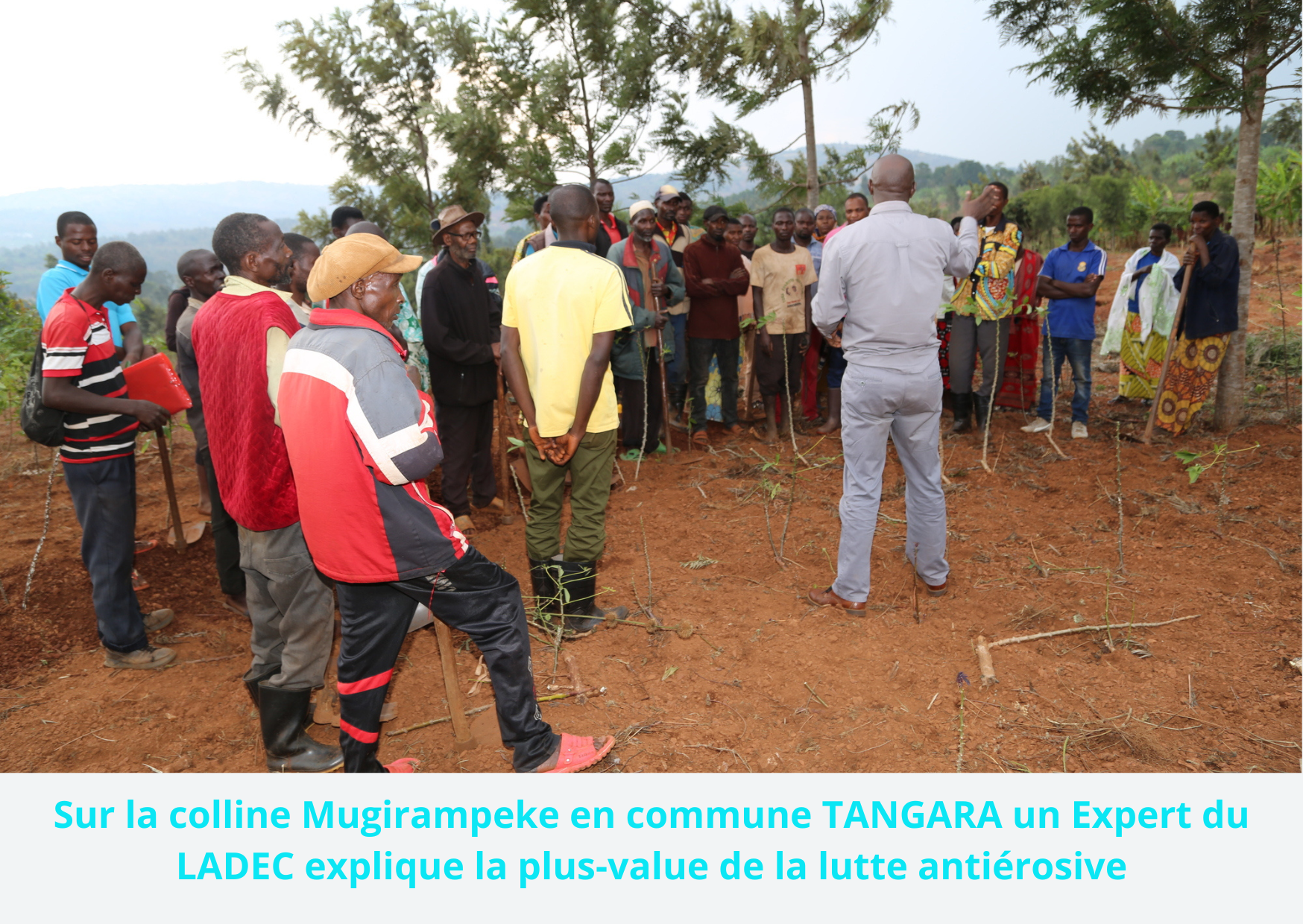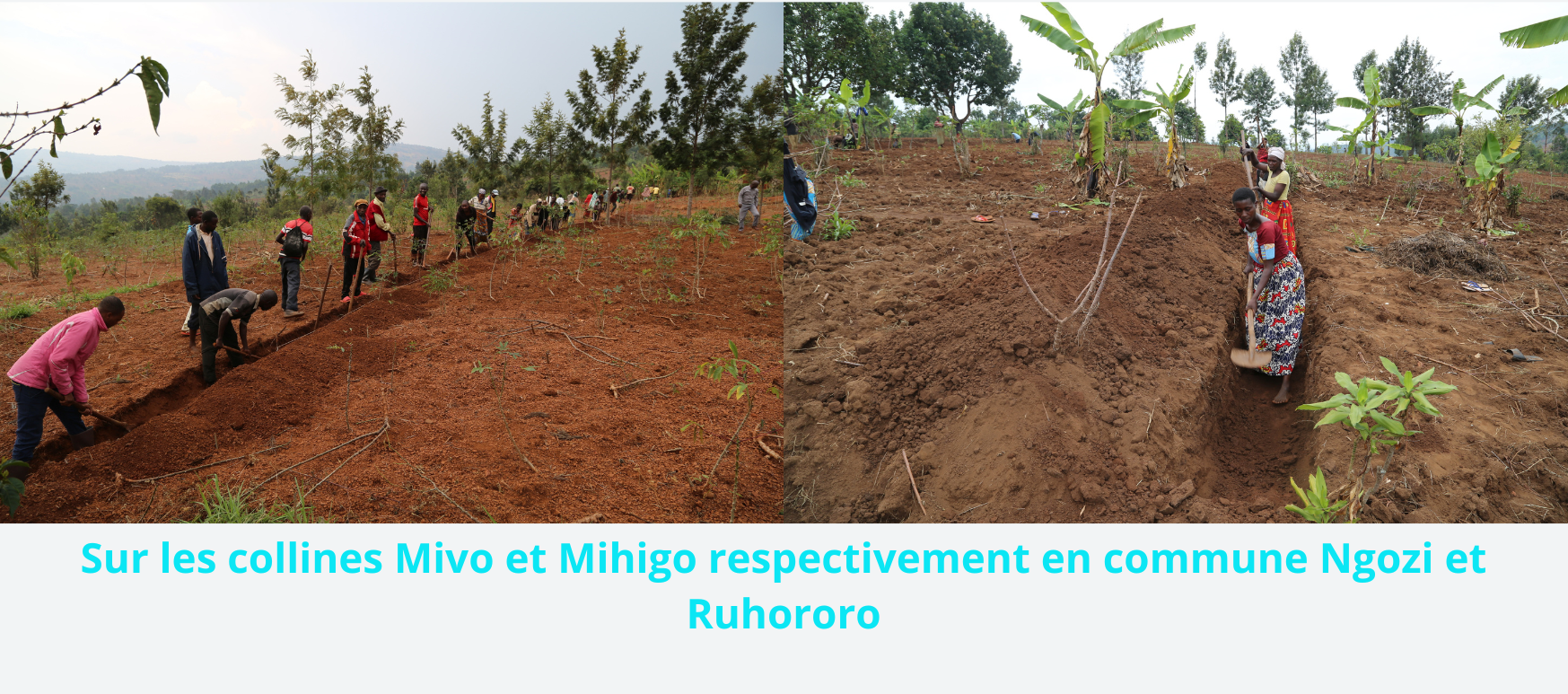LAND VALUATION THROUGH EROSION CONTROL: AN ALTERNATIVE SOLUTION TO MASSIVELY ENCOURAGE THE POPULATION TO ADHERE TO THE LAND CERTIFICATION PROCESS.
Our previous article was on a new LADEC initiative aimed at stimulating people's interest in certifying their land rights. This involves exploring approaches aimed at enhancing the value of land through productive farming, in particular through a new cassava-growing technique. LADEC is working on the assumption that increasing the value of land, through increased production, could give a considerable boost to the certification of land rights (https://ladec.bi/index.php/en/newss/valuing-land-to-boost-land-certification). It is in this context that LADEC continues to explore other ways of promoting and strengthening land tenure security.

This article reports on LADEC's contribution to the fight against erosion, with a view to increasing agricultural production and, in turn, securing rights to land that has become more productive and therefore more useful.
There are several forms of erosion, but water erosion is by far the main one in the burundian context. Water erosion begins with the fall of raindrops on soil without sufficient vegetation cover, causing the destruction of clods and the displacement of finer particles by runoff. This muddy water drips down the slope, creating channels as it passes. If there is no correction, each subsequent rainfall washes away considerable quantities of soil, until the result is totally bare soil that, in the long run, is reduced to exposed rock. Water erosion occurs when the soil is unable to store or infiltrate rainwater, and the intensity of rainfall exceeds the soil's retention and infiltration capacities (https://www.iwacu-burundi.org/interview-exclusive-avec-le-pr-salvator-kaboneka/).
The consequences of erosion on agricultural land discourage landowners from securing rights to their land
Erosion leads to the loss of topsoil. According to M. Ndayiragije, a professor at the University of Burundi, studies show that the eastern part of the country, the provinces of Gitega and Mwaro, and the Mirwa region lose 4, 40 and 100 tonnes of soil per hectare per year respectively. According to the same author, if nothing is done, within 40 years there will be no land left to cultivate in the Mirwa region (Le journal BURUNDI ECO, 2021).
By washing away such vast quantities of soil, erosion poses a major threat to soil fertility and, consequently, to agricultural production.
In addition, the areas most prone to erosion are the most exposed to more severe climatic events, notably floods and landslides.
These situations lead to the displacement of populations and the abandonment of farmland.
The consequences of erosion have a significant socio-economic impact in terms of reduced agricultural income and loss of livelihood.
Under these conditions, local populations are reluctant to invest in the certification of land with little or no productivity and threatened by erosion phenomena, with all the consequences mentioned above.
LADEC's contribution: raising awareness and monitoring erosion control activities
Intervention begins with raising public awareness. This is followed by monitoring the implementation of anti-erosion ditch development activities on each of the targeted hills in the five communes of the Ngozi and Kayanza provinces making up the intervention zone of the Land Conflict Prevention and Resolution (PRCF) project. In each commune, one locality or « colline » has been prioritized, with others to follow by multiplier effect once the pilot ones have adopted the culture of securing and protecting their landholdings.
LADEC's contribution to national initiatives
The Ministry of the Environment has instituted one day a week (usually Thursdays) in all the country's localities, dedicated to protecting the environment by digging anti-erosion ditches. This activity is coordinated at communal level by communal environmental technicians. It is important to note that many national projects supported by various donors have invested in the development of erosion control ditches by remunerating the labor involved in digging them. It has to be said, however, that these tools for protecting soil against erosion have not been maintained. It is also deplorable that on some farms, the anti-erosion ditches built with project support have been filled in.

LADEC's intervention at commune level brings added value
LADEC has opted to intervene at commune level. It strengthens communal capacities and assists communal agronomists in mobilizing hillside populations. With this approach, LADEC aims to bring communal authorities to understand the stakes and interest of the theme: moving towards improved and more productive land management, exploiting land that is well developed and free from conflicts in the community.
Moreover, rational land use could help reduce land conflicts. Indeed, low soil profitability leads some people to use every means possible to expand agricultural space in order to increase yields. Enhancing soil productivity could help prevent conflicts resulting from such illegal strategies.
LADEC's approach is to first mobilize local authorities. Working in close collaboration with local notables, they can then help the rest of the population to move towards the same ideal.
If all these efforts are combined, we can expect to see an increase in the number of households having their landholdings certified in the future.
 En
En  FR
FR 

